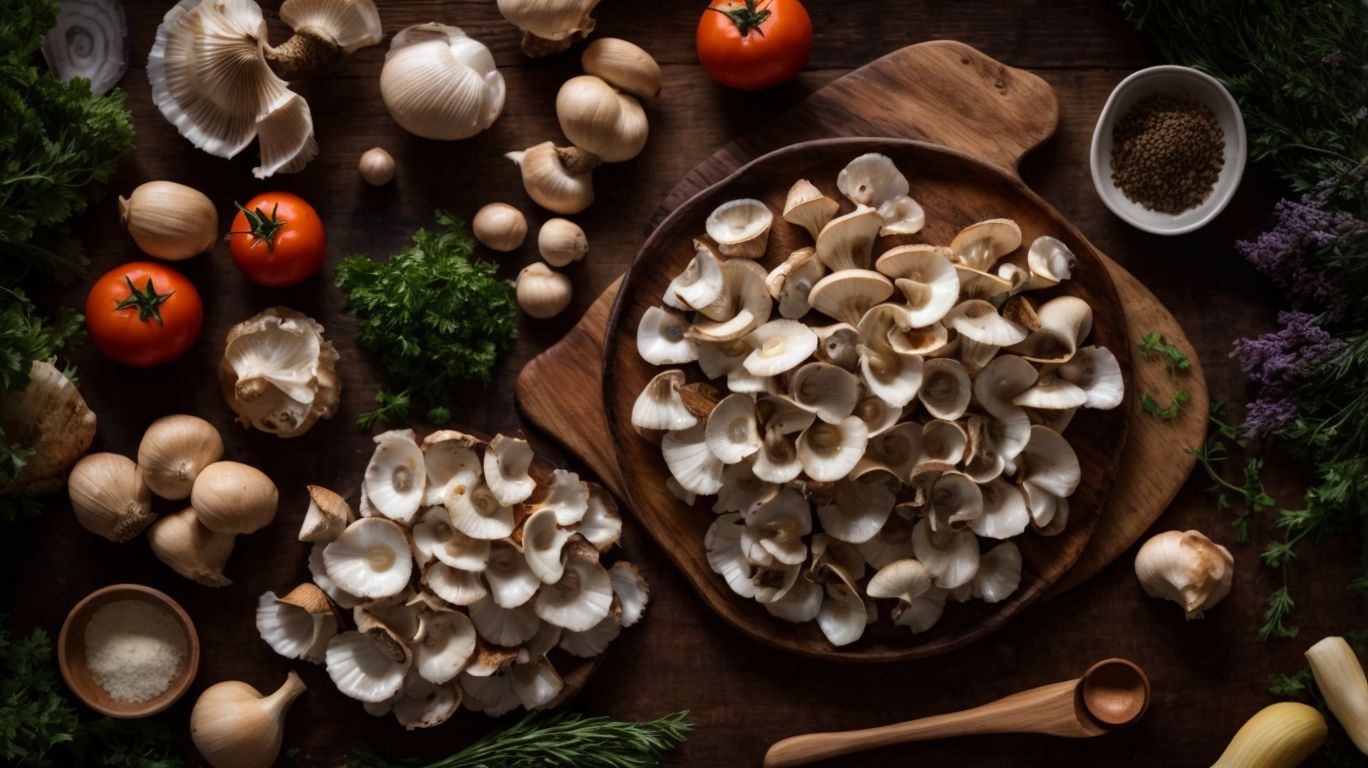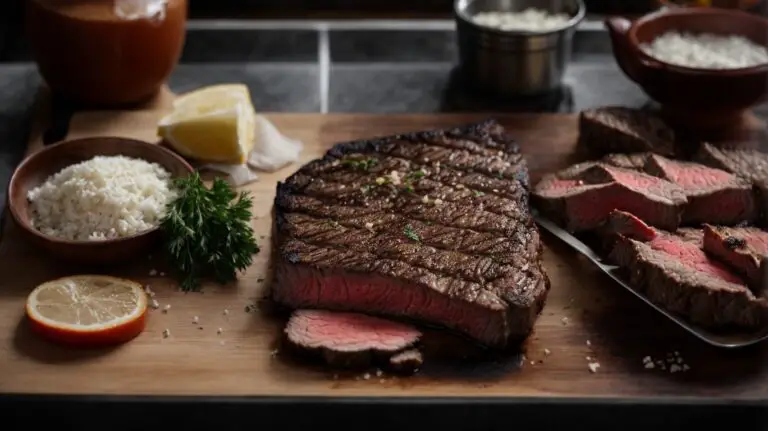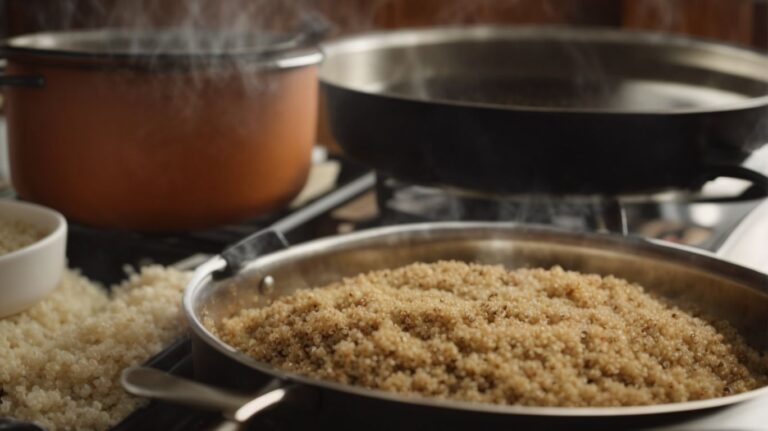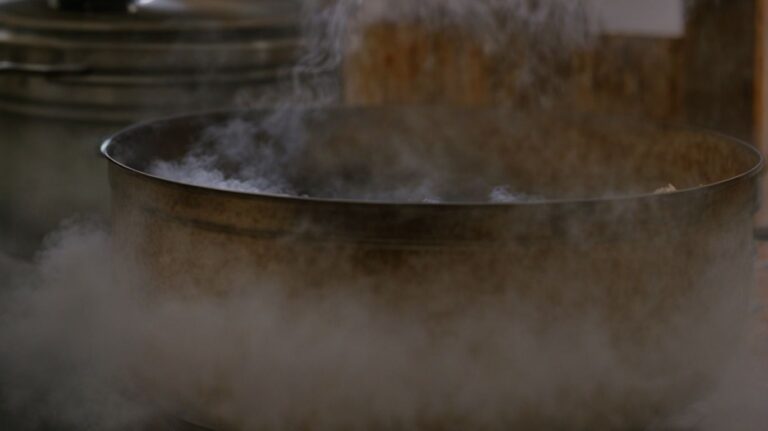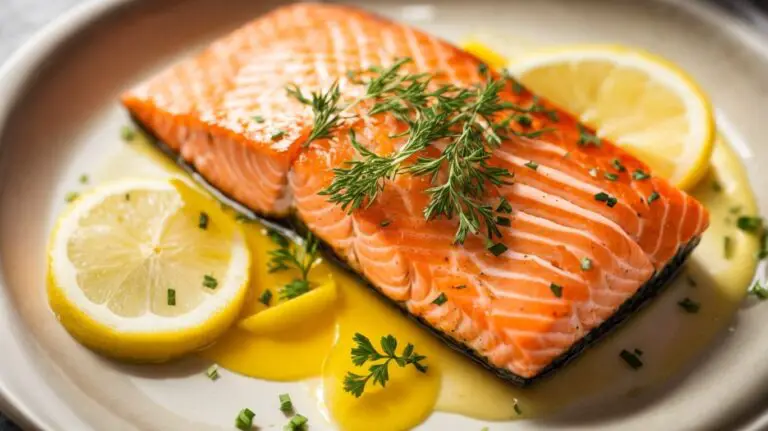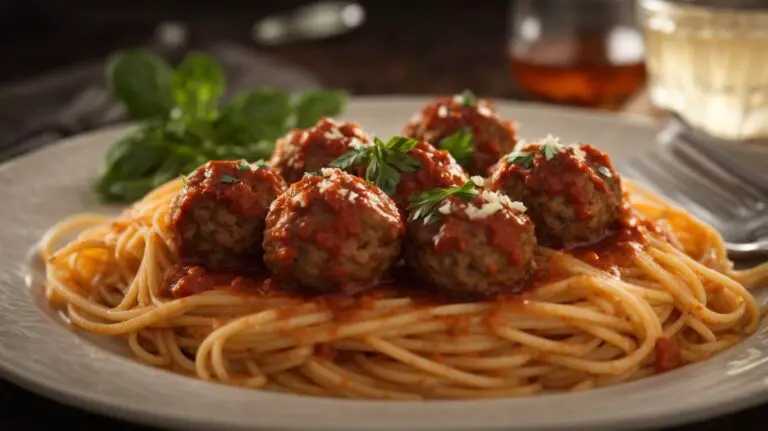How to Cook Oyster Mushrooms?
Looking to add a new mushroom variety to your cooking repertoire? Oyster mushrooms are a delicious and versatile option worth exploring.
We delve into what oyster mushrooms are, how to choose the best ones, how to store and clean them properly, and most importantly, how to cook them in a variety of mouthwatering ways.
Whether you prefer them sauteed, roasted, grilled, stir-fried, or in a comforting soup, we’ve got you covered with all the tips and tricks you need to make the most of this flavorful fungus. So, let’s get cooking!
Key Takeaways:
What Are Oyster Mushrooms?
Oyster mushrooms, known for their unique appearance and distinct taste, are a popular choice in the culinary world.
Oyster mushrooms, with their delicate and pale grey oyster-shaped caps, have a mild and earthy flavor that is often described as having a subtle umami undertone. When sautéed to perfection, they develop a tender yet meaty texture that adds a delightful contrast to various dishes. Their versatility shines through in stir-fries, pasta dishes, soups, and even as a topping for pizzas. Whether grilled, roasted, or added to creamy sauces, oyster mushrooms offer a burst of savory flavors that elevate any culinary creation.
Appearance
The appearance of oyster mushrooms is characterized by their delicate, fan-shaped caps, ranging in color from pale white to subtle shades of brown.
The fan-shaped caps of oyster mushrooms can vary in size, with some reaching as large as 10 inches in diameter. Their unique shape sets them apart from other common mushroom varieties, such as white button mushrooms and portobello mushrooms. Oyster mushrooms have a velvety texture on their surface, adding to their distinct appearance. They can be found in a range of colors, from white and beige to pink and yellow, depending on the variety. The pleurotus ostreatus species, in particular, often exhibits a grayish hue.”
Taste and Texture
The taste of oyster mushrooms is mild yet savory, with a hint of earthiness, while their texture is delicate and slightly chewy when cooked.
Oyster mushrooms are renowned for their umami undertones, reminiscent of the savory flavor found in meat and aged cheeses. When sautéed with garlic and butter, these mushrooms transform into a delectable dish bursting with rich flavors that complement their natural earthiness.
Alternatively, incorporating fresh parsley with oyster mushrooms not only adds a vibrant herbal note but also enhances the overall taste profile with a refreshing touch, balancing out the umami essence. The versatility of oyster mushrooms makes them perfect for a variety of culinary creations, offering a unique combination of subtle flavors and pleasing textures.
How to Choose the Best Oyster Mushrooms?
Selecting the best oyster mushrooms involves considering factors like freshness, size, shape, and color to ensure optimal flavor and quality in your dishes.
Regarding freshness, look for mushrooms that are firm and plump, without any signs of discoloration or sliminess, as these indicate deterioration. Optimal freshness translates directly into a more intense and pleasing umami flavor profile when the mushrooms are cooked or sautéed.
Visually inspect the size and shape of the oyster mushrooms; they should be uniform in size and have a smooth, delicate shape, signaling peak quality. The color also plays a crucial role, with vibrant hues suggesting a more robust taste and texture in your culinary creations.
Freshness
When selecting oyster mushrooms, prioritize freshness to experience their full depth of flavors and ensure a satisfying culinary experience.
Choosing fresh oyster mushrooms for your recipes is crucial as it directly impacts the umami richness and overall taste profile. Fresher mushrooms tend to have a firmer texture, enhancing the mouthfeel of your dish. The quality of the mushroom’s flavor intensifies when they are freshly harvested.
- When cooking with oyster mushrooms, their fresh, earthy taste can truly shine through, elevating the complexity of various dishes.
- Recipes that require the umami depth of oyster mushrooms benefit significantly from using the freshest produce available.
- To create a delectable mushroom-centric recipe, like a creamy pasta or a savory stir-fry, the choice of fresh mushrooms will enhance the dish’s overall deliciousness.
Size and Shape
Consider the size and shape of oyster mushrooms when selecting them for cooking, as these factors can influence the texture and visual appeal of your dishes.
Large oyster mushrooms are ideal for creating hearty meals, such as sautéed mushroom steaks or roasted mushrooms as a meat substitute. Their robust size allows for grilling and baking, enhancing their umami flavor and meaty texture.
On the other hand, small oyster mushrooms are perfect for delicate dishes like stuffed mushrooms or as a garnish for salads and soups. Their tender texture and mild flavor pair well with creamy fillings or light dressings, adding depth and richness to your recipes.
Color
The color of oyster mushrooms can vary from creamy white to shades of brown, offering a visual spectrum that enhances the aesthetic appeal of your culinary creations.
When incorporating oyster mushrooms in your dishes, the color palette they provide can truly elevate the overall look of your meal. Picture a vibrant parsley garnish against the earthy tones of brown oyster mushrooms in a savory stir-fry, creating a visually striking contrast. Alternatively, consider the delicate balance of white button mushrooms alongside the light green hues of asparagus in a creamy risotto, adding both flavor and a harmonious blend of colors to your plate.
How to Store Oyster Mushrooms?
Properly storing oyster mushrooms is essential to maintain their freshness and extend their shelf life, whether through refrigeration or freezing methods.
When refrigerating oyster mushrooms, ensure they are stored in a clean, airtight container or a resealable bag lined with a paper towel to absorb excess moisture.
For longer-term preservation, consider freezing the mushrooms by first trimming and slicing them to your desired thickness.
Spread the sliced mushrooms on a baking sheet in a single layer and freeze until firm before transferring them to a freezer-safe bag.
When ready to use, there’s no need to thaw the mushrooms; you can simply add them directly to soups, stir-fries, or sear them for a flavorful and versatile cooking ingredient.
Refrigeration
Refrigerating oyster mushrooms in a breathable container helps maintain their freshness and prevents moisture buildup, ensuring longer shelf life and optimal taste when used in recipes.
When placing oyster mushrooms in the refrigerator, it is crucial to avoid airtight containers as they can lead to condensation and spoilage. Opt for paper bags or a loosely covered dish lined with a paper towel to allow airflow while retaining moisture. Storing oyster mushrooms this way not only extends their shelf life but also helps them stay plump and flavorful.
Properly refrigerated oyster mushrooms are a versatile ingredient that adds a unique umami flavor to various dishes. From stir-fries to pasta dishes, their delicate texture and earthy taste complement a wide array of ingredients, making them a favorite among culinary enthusiasts.
Freezing
Freezing oyster mushrooms is a convenient way to extend their shelf life and preserve them for future use, maintaining their quality and flavors when thawed and cooked.
When freezing oyster mushrooms, it’s crucial to clean and dry them thoroughly before packaging. Start by trimming any tough parts and slicing them to your desired size. Lay them out in a single layer on a baking sheet and flash freeze them for about an hour. Then transfer the partially frozen mushrooms into airtight containers or freezer bags, removing excess air to prevent freezer burn. Label the containers with the date for easy tracking.
To retain the best taste and texture when using frozen oyster mushrooms, consider incorporating them into dishes like creamy pasta sauce, hearty risotto, or flavorful scrambled eggs. When ready to use, thaw the mushrooms in the refrigerator overnight or quickly in a pan on low heat. Avoid refreezing mushrooms once they have been thawed.
How to Clean Oyster Mushrooms?
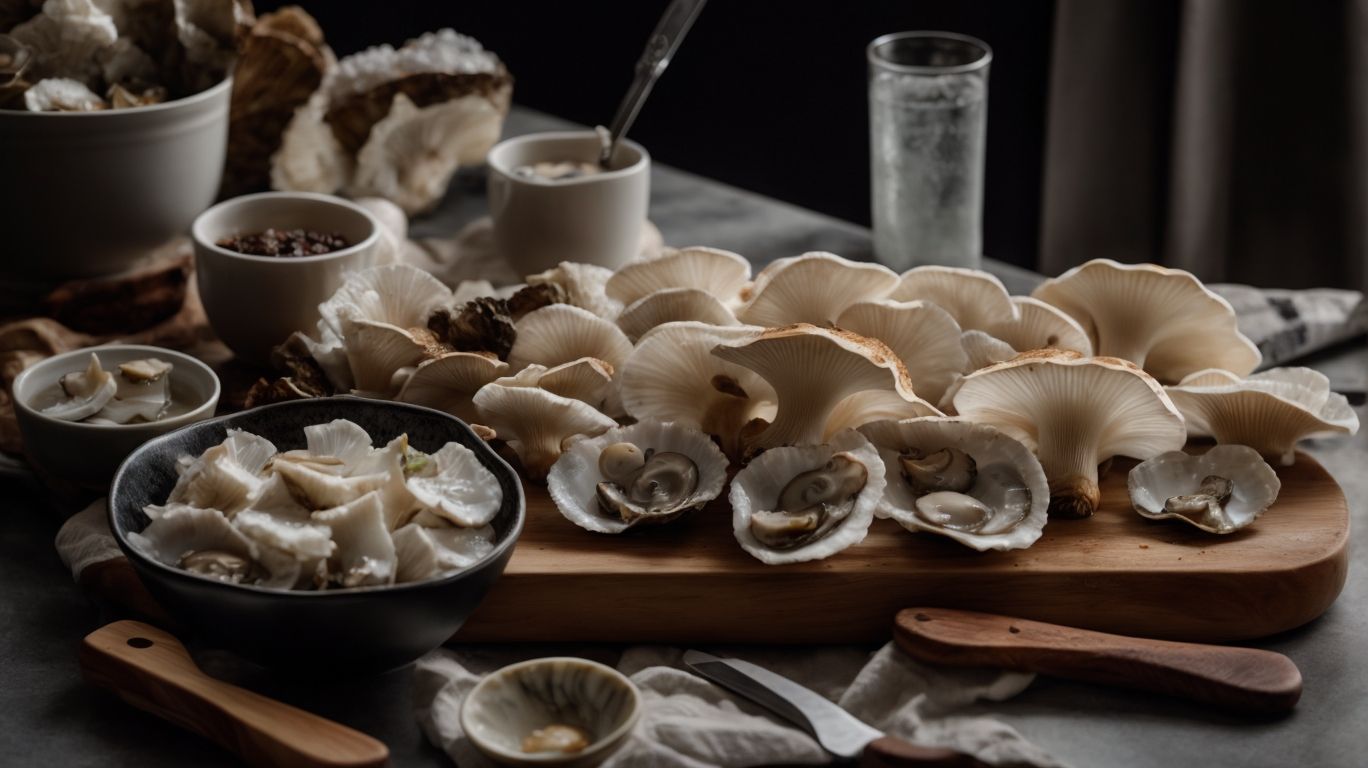
Credits: Poormet.Com – Justin Lewis
Cleaning oyster mushrooms is a crucial step before cooking, involving gentle washing, trimming, and thorough inspection to remove any debris or impurities.
After gently washing the oyster mushrooms, the next step is to trim off any tough or discolored parts. Inspecting each mushroom carefully ensures that only the freshest pieces are used in your dish. Ensuring cleanliness throughout the process is essential for maintaining the flavor integrity of the mushrooms.
Once the cleaning process is complete, these cleaned oyster mushrooms can be used in a variety of dishes. One delightful option is incorporating them into a flavorful shiitake mushroom recipe alongside other complementary ingredients.
From creamy risottos to hearty stews, there are endless serving ideas to make the most of these cleaned oyster mushrooms. They can also be a great addition to bruschetta or as a topping on avocado toast, adding a unique umami flavor profile to your meals.
Washing
Washing oyster mushrooms under cold running water is an effective method to remove dirt and debris while preserving their delicate texture and flavors for cooking.
Before washing, it’s essential to gently brush off any visible dirt with a soft brush or cloth. This helps prevent the mushrooms from absorbing too much water during the washing process.
Once the initial dirt is removed, submerge the mushrooms in a bowl of cold water and swish them around gently to dislodge any remaining debris. To ensure thorough cleaning, you can also add a splash of vinegar to the water.
After washing, pat the mushrooms dry with a clean kitchen towel or paper towel. Now, these clean mushrooms are ready to be used in various recipes, such as stir-fries, soups, salads, or even as a meat substitute.
Trimming
Trimming oyster mushrooms involves cutting off tough stems or any discolored parts to ensure uniformity and optimal presentation in your culinary creations.
When preparing oyster mushrooms for your favorite dishes like a rich pasta sauce, it’s crucial to remove the woody stems that can detract from the overall texture and flavor. Look for any dark spots or blemishes on the caps and trim them away gently with a sharp knife, leaving behind only the freshest and most appetizing parts. By taking the time to carefully trim your mushrooms, you not only improve the aesthetics of your meal but also enhance the umami-rich taste that these fungi are known for.
How to Cook Oyster Mushrooms?
Cooking oyster mushrooms opens up a world of culinary possibilities, from sautéed dishes to grilled delicacies and flavorful soups.
These versatile mushrooms absorb flavors exceptionally well, making them the perfect canvas for various seasoning profiles. When sautéing oyster mushrooms, a touch of garlic and soy sauce can bring out their natural umami richness. For roasted preparations, a sprinkle of herbs like thyme or rosemary elevates their earthy taste. Grilling oyster mushrooms intensifies their smoky essence, perfect for adding depth to salads or pasta dishes. If stir-frying, a mix of colorful vegetables and a dash of chili can create a vibrant, spicy dish. Incorporating oyster mushrooms into a hearty soup can introduce a comforting and satisfying umami note to the broth.
Sauteed Oyster Mushrooms
Sautéed oyster mushrooms in butter with a touch of garlic and parsley create a simple yet elegant dish bursting with flavor and aroma.
To make this delectable dish, start by heating a skillet over medium heat and adding a generous amount of butter. Allow the butter to melt and sizzle before tossing in thinly sliced garlic cloves, white button mushrooms, and fresh parsley leaves. Cook until the mushrooms turn golden brown and the garlic is fragrant, releasing its delightful aroma. Season with salt and pepper to taste, enhancing the earthy flavors of the mushrooms. Serve these savory sautéed oyster mushrooms as a side dish, over a bed of creamy polenta, or as a topping for grilled steak for a memorable dining experience.
Roasted Oyster Mushrooms
Roasted oyster mushrooms seasoned with herbs and a drizzle of olive oil offer a rich, savory taste with caramelized edges that enhance their natural umami flavor.
When preparing this delightful dish, it’s important to ensure the mushrooms are well-coated with the seasoning mix to enhance their depth of flavor. The key is to gently toss them in a bowl, allowing the herbs and olive oil to cling to each piece.
For optimal cooking, arrange the seasoned mushrooms on a baking tray in a single layer, making sure they have enough space to roast evenly. This method helps achieve that perfect blend of tender insides and crispy exteriors, creating a pleasing textural contrast.
Grilled Oyster Mushrooms
Grilled oyster mushrooms marinated in soy sauce and herbs develop a smoky char and intensified umami notes, perfect for veggie stir-fries or as a side dish.
Marinating these king oyster mushrooms in a mix of soy sauce, garlic, and thyme before grilling adds depth and richness to their flavor profile. The key to achieving that perfect smoky flavor is to grill them over medium heat, allowing them to caramelize slightly while maintaining their juicy texture.
For added umami richness, consider a sprinkle of sesame seeds or a drizzle of balsamic glaze after grilling. These mushrooms pair beautifully with creamy polenta, offering a contrast in textures and flavors that will impress even the most discerning palates.
Stir-fried Oyster Mushrooms
Stir-fried oyster mushrooms with a medley of colorful veggies and soy sauce create a quick and nutritious meal packed with umami richness and vibrant textures.
Imagine the irresistible aroma of sautéed mushrooms blending with the sweetness of bell peppers, the crunch of snap peas, and the earthy notes of shredded carrots. The addition of tofu cubes or a sprinkle of sesame seeds can elevate this dish further.
Cooking tip: make sure to cook the ingredients quickly over high heat to retain their crunchiness and nutrients.
Oyster Mushroom Soup
A comforting oyster mushroom soup infused with garlic, herbs, and a splash of cream delivers a creamy texture and umami-rich taste that warms the soul.
If you’re looking to elevate this soup even further, consider adding a generous sprinkle of grated Parmesan cheese just before serving. The sharp tanginess of Parmesan complements the earthiness of the oyster mushrooms beautifully.
To make the soup more substantial, you can also toss in some cooked farro for added texture and nuttiness.
For a luxurious touch, softly poached eggs can be gently placed atop the steaming bowl of soup, adding a velvety richness that takes this dish to a whole new level.
The combination of these ingredients creates a symphony of flavors that will have you coming back for more!
Frequently Asked Questions
How to Cook Oyster Mushrooms?
Here are 6 FAQs on how to cook oyster mushrooms:
What is the best way to prepare oyster mushrooms for cooking?
The best way to prepare oyster mushrooms for cooking is to clean them first. Gently wipe off any dirt with a damp paper towel or rinse them under cold water and pat dry. You can also trim off the tough end of the stem if desired.
How do I cook oyster mushrooms without making them soggy?
To prevent oyster mushrooms from becoming soggy, make sure to cook them over high heat and avoid overcrowding the pan. This will allow them to brown and crisp up instead of releasing moisture and becoming mushy.
Can I eat oyster mushrooms raw?
Yes, oyster mushrooms are safe to eat raw, but they have a tough and chewy texture. It is recommended to cook them to enhance their flavor and make them more tender.
What is the best way to cook oyster mushrooms?
Oyster mushrooms are versatile and can be cooked in various ways such as sautéing, roasting, grilling, or even deep-frying. It depends on personal preference and the dish it will be used in.
How do I store cooked oyster mushrooms?
Cooked oyster mushrooms can be stored in an airtight container in the refrigerator for up to 3 days. Make sure to let them cool completely before storing and reheat them in a pan or microwave when ready to eat.
Can I freeze cooked oyster mushrooms?
Yes, you can freeze cooked oyster mushrooms. Let them cool completely, then place them in a freezer-safe container or bag. They can be stored in the freezer for up to 3 months. Thaw in the refrigerator before reheating.

